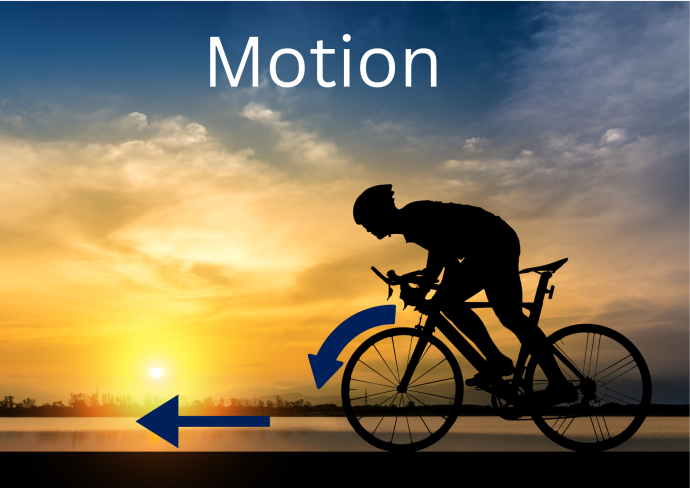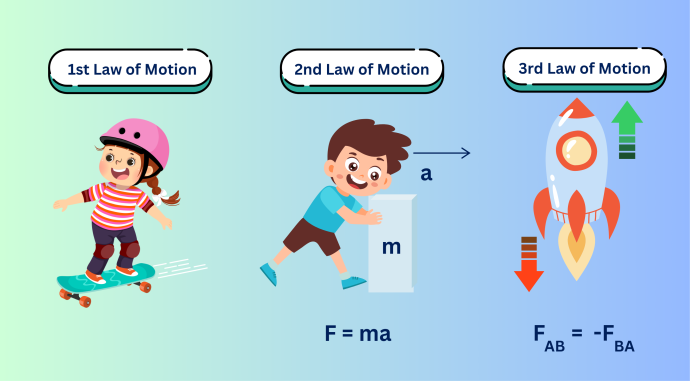Motion is when something moves from one place to another over time.
Everything around us is always moving, from tiny particles to huge galaxies.
In physics, we describe motion using ideas like distance, speed, and acceleration.

- Types of Motion
- Linear Motion This is the simplest kind of motion. An object moves in a straight line. For example, a car driving down a road or a ball rolling on the ground.
- Rotational Motion: In this type of motion, an object spins around a centre point. The Earth spins on its axis, which gives us day and night.
- Oscillatory Motion: This is when an object moves back and forth in a regular way. A pendulum swinging or a spring bouncing are good examples.
- Circular Motion: Objects in circular motion move around in a circle. Planets move around stars, and roundabouts spin. Even if the speed stays the same, the object is still accelerating because its direction is always changing.
Video fileTypes of Motion - Speed vs. Velocity
Speed is how fast something moves. If you run 10 metres in 2 seconds, your speed is 5 metres per second (m/s).
Velocity is speed with direction. If you run 5 m/s east, that’s your velocity. Velocity depends on both speed and direction.
- Acceleration
Acceleration is how quickly the speed or direction of something changes. If a car speeds up, slows down, or turns, it is accelerating.
You can find acceleration using this equation:
Acceleration = (Final velocity - Initial velocity) / Time
This means an object can be accelerating even if its speed doesn’t change, as long as its direction does.
- Newton’s Laws of Motion
Isaac Newton explained motion with three laws:
- First Law (Inertia): An object at rest stays still. An object in motion keeps moving at the same speed and in the same direction unless something forces it to stop or change.
- Second Law (Force and Acceleration): The force needed to move something depends on how heavy it is and how fast you want it to move. The equation is: Force = mass × acceleration (F = ma)
- Third Law (Action and Reaction): For every action, there is an equal and opposite reaction. If you push against a wall, the wall pushes back with the same force.
Image CreditThis work by The Schools' Observatory is licensed under All rights reserved
CreditThis work by The Schools' Observatory is licensed under All rights reserved- Kepler's Laws of Planetary Motion
Johannes Kepler explained how planets move around the Sun with three laws:
- Kepler’s First Law: Planets move in oval-shaped paths called ellipses, not perfect circles. The Sun is at one focus of the ellipse.
- Kepler’s Second Law: A line between a planet and the Sun covers the same area in the same amount of time. This means planets move faster when they are closer to the Sun and slower when farther away.
- Kepler’s Third Law: The time a planet takes to orbit the Sun depends on how far it is from the Sun. Planets farther from the Sun take much longer to complete their orbits.
Use this Kepler's 3 Laws activity to discover more about planetary motion and calculate the mass of the biggest object in our Solar System, the Sun.
Image CreditThis work by The Schools' Observatory is licensed under All rights reserved
CreditThis work by The Schools' Observatory is licensed under All rights reserved- Motion in Space
Motion is everywhere in space. Planets orbit stars, stars move in galaxies, and galaxies travel through space.
Gravity pulls objects toward each other, and momentum keeps them moving.
Understanding motion helps us predict how things behave in space, from spacecraft to stars.
